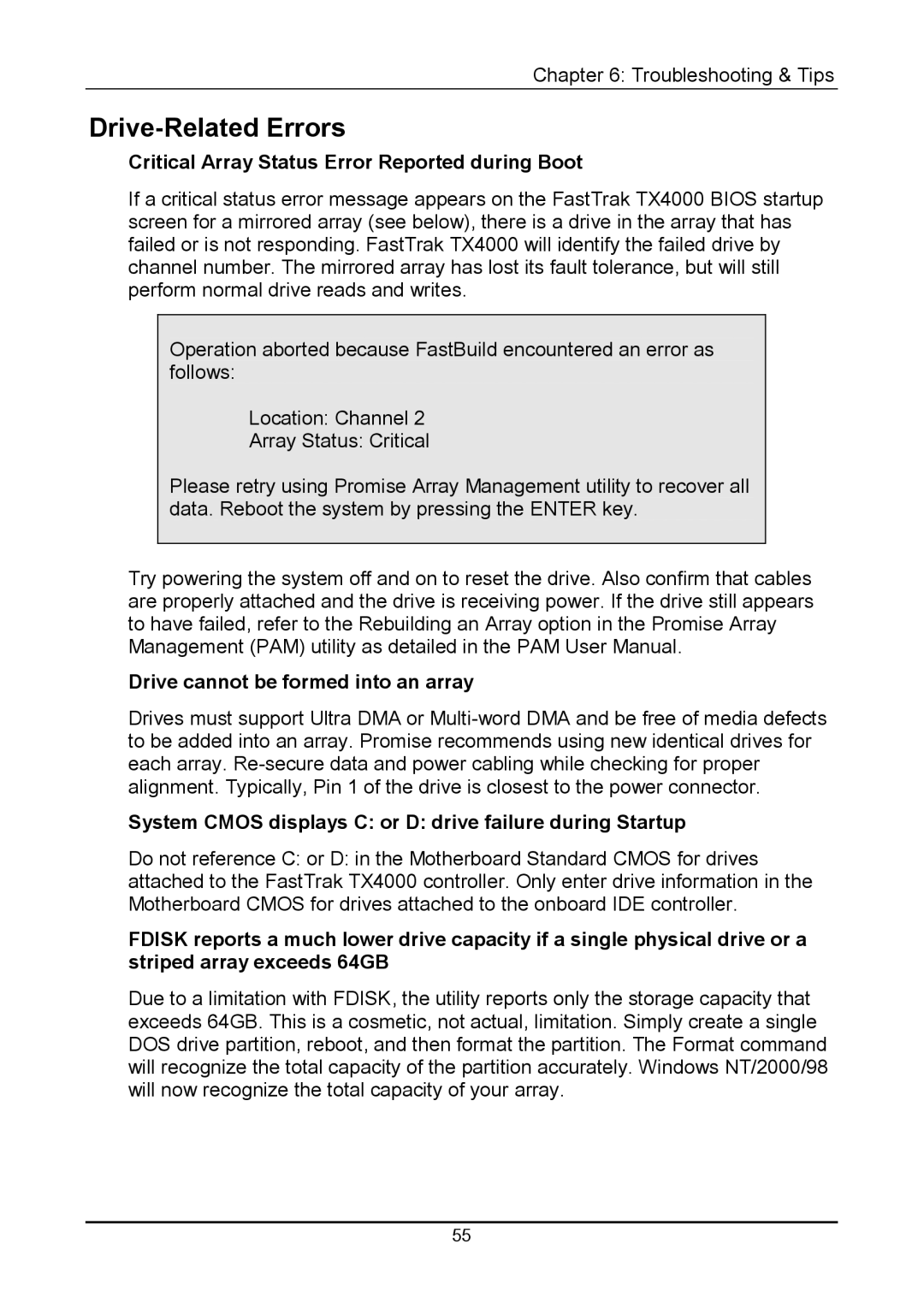
Chapter 6: Troubleshooting & Tips
Drive-Related Errors
Critical Array Status Error Reported during Boot
If a critical status error message appears on the FastTrak TX4000 BIOS startup screen for a mirrored array (see below), there is a drive in the array that has failed or is not responding. FastTrak TX4000 will identify the failed drive by channel number. The mirrored array has lost its fault tolerance, but will still perform normal drive reads and writes.
Operation aborted because FastBuild encountered an error as follows:
Location: Channel 2
Array Status: Critical
Please retry using Promise Array Management utility to recover all data. Reboot the system by pressing the ENTER key.
Try powering the system off and on to reset the drive. Also confirm that cables are properly attached and the drive is receiving power. If the drive still appears to have failed, refer to the Rebuilding an Array option in the Promise Array Management (PAM) utility as detailed in the PAM User Manual.
Drive cannot be formed into an array
Drives must support Ultra DMA or
System CMOS displays C: or D: drive failure during Startup
Do not reference C: or D: in the Motherboard Standard CMOS for drives attached to the FastTrak TX4000 controller. Only enter drive information in the Motherboard CMOS for drives attached to the onboard IDE controller.
FDISK reports a much lower drive capacity if a single physical drive or a striped array exceeds 64GB
Due to a limitation with FDISK, the utility reports only the storage capacity that exceeds 64GB. This is a cosmetic, not actual, limitation. Simply create a single DOS drive partition, reboot, and then format the partition. The Format command will recognize the total capacity of the partition accurately. Windows NT/2000/98 will now recognize the total capacity of your array.
55
